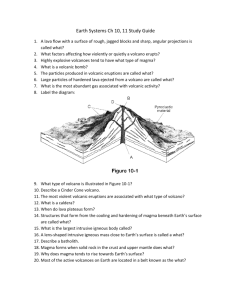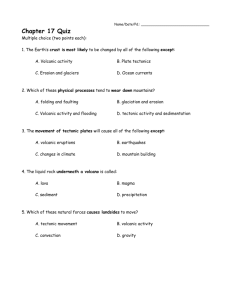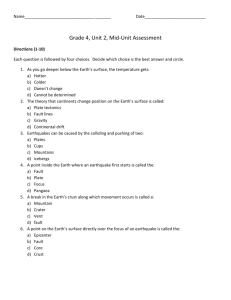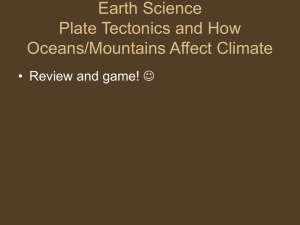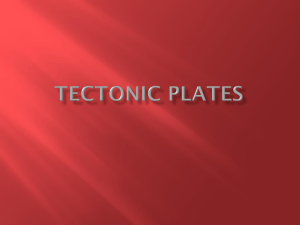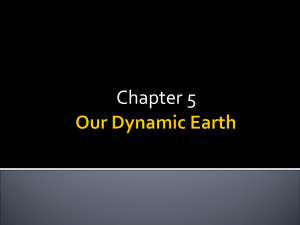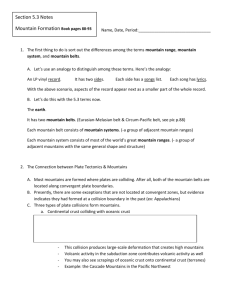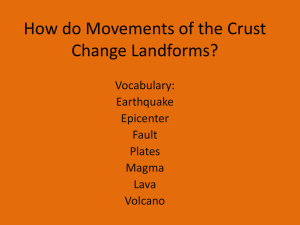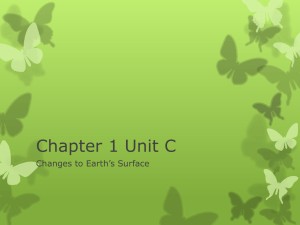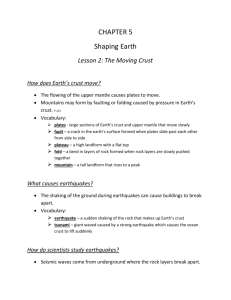File
advertisement
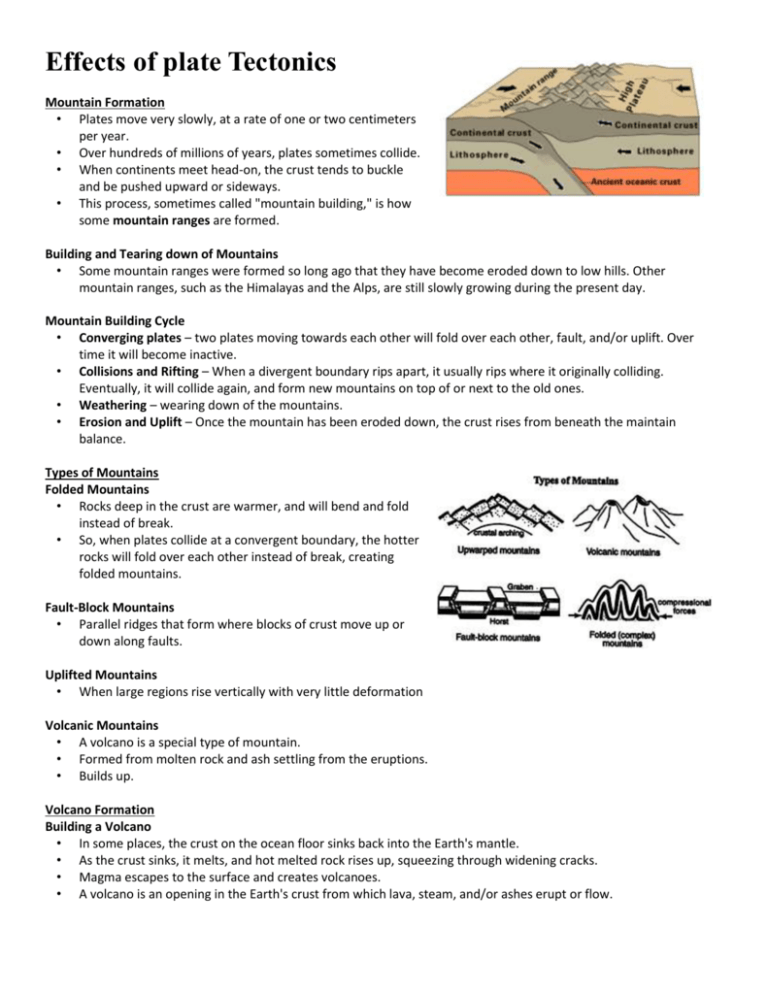
Effects of plate Tectonics Mountain Formation • Plates move very slowly, at a rate of one or two centimeters per year. • Over hundreds of millions of years, plates sometimes collide. • When continents meet head-on, the crust tends to buckle and be pushed upward or sideways. • This process, sometimes called "mountain building," is how some mountain ranges are formed. Building and Tearing down of Mountains • Some mountain ranges were formed so long ago that they have become eroded down to low hills. Other mountain ranges, such as the Himalayas and the Alps, are still slowly growing during the present day. Mountain Building Cycle • Converging plates – two plates moving towards each other will fold over each other, fault, and/or uplift. Over time it will become inactive. • Collisions and Rifting – When a divergent boundary rips apart, it usually rips where it originally colliding. Eventually, it will collide again, and form new mountains on top of or next to the old ones. • Weathering – wearing down of the mountains. • Erosion and Uplift – Once the mountain has been eroded down, the crust rises from beneath the maintain balance. Types of Mountains Folded Mountains • Rocks deep in the crust are warmer, and will bend and fold instead of break. • So, when plates collide at a convergent boundary, the hotter rocks will fold over each other instead of break, creating folded mountains. Fault-Block Mountains • Parallel ridges that form where blocks of crust move up or down along faults. Uplifted Mountains • When large regions rise vertically with very little deformation Volcanic Mountains • A volcano is a special type of mountain. • Formed from molten rock and ash settling from the eruptions. • Builds up. Volcano Formation Building a Volcano • In some places, the crust on the ocean floor sinks back into the Earth's mantle. • As the crust sinks, it melts, and hot melted rock rises up, squeezing through widening cracks. • Magma escapes to the surface and creates volcanoes. • A volcano is an opening in the Earth's crust from which lava, steam, and/or ashes erupt or flow. Building a Volcano • When a volcano erupts, the lava flows down and hardens to form new land. • This new land may take the form of a volcanic mountain, a plateau, an island, or an archipelago. • An archipelago is a chain of islands. • Volcanoes are usually found in the ocean or along the coast. • A volcanic arc is a curved line of volcanoes that forms parallel to a plate boundary. Volcanic Eruptions • Volcanic eruptions can cause rapid destruction of habitats and changes to a landscape. • They can also benefit the surrounding area. • Volcanic ash and dust are rich with minerals. • These minerals seep into the soil, making it more fertile and allowing new vegetation to grow back quickly. • Another benefit is that many precious metals and gemstones can be found in cooled lava. Earthquakes Earthquakes • Sometimes, plates do not hit head on, but rub past each other instead. • Since they do not have smooth edges, the rubbing is jerky and uneven. • Pressure builds up and is then suddenly released. • The result is an earthquake. • An earthquake is the sudden moving and shaking of a part of the Earth's crust. • Earthquakes occur along fault lines, which are cracks in the Earth's crust where rocks move past one another. Ocean Basins What is an Ocean Basin? • Ocean basins can be described as saucer-like depressions of the seabed. • The largest ocean basins are 3 to 5 kilometers (2 to 3 miles) deep and stretch from the outer margins of the continents to the mid-ocean ridges. Other Oceanic Landforms • Ocean trenches – deep depression in the seafloor. • Undersea Mountain Chains – mountain chains • Mid ocean ridges – part of a divergent boundary. Mountain chain. • Continental shelves – underwater landmass that extends from a continent.
